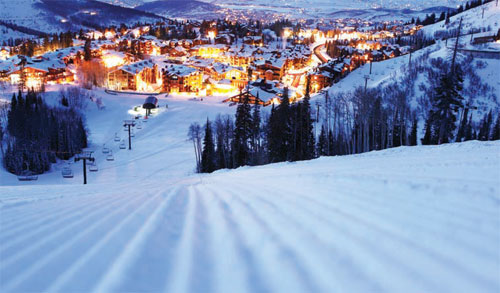By Brice Wallace
Utah’s top tourism official is confident in an industry rebound because the same attributes that made Utah such a tourism destination success in the first place will remain after the COVID-19 pandemic.
While Utah’s leisure and hospitality industry has been the hardest-hit economically by the pandemic’s effects, Vicki Varela, managing director of the Utah Office of Tourism, recently listed several characteristics Utah already had in place before the virus: its Red Emerald plan, Tourism Marketing Performance Fund for advertising Utah’s tourism charms, and breathtaking landscapes.
None are going away.
“If you get to be in the tourism industry, you want to be in a place where Mother Nature played favorites, and we have what the world wants right now,” Varela said told an in-person and remote audience at the recent Utah Tourism Conference.
She likened Utah to Birkenstocks sandals and shoes, which were always functional and elegant in their simplicity and functionality but then “got really sexy.”
“And I feel like that is the story of Utah — that people once understated it as this kind of place they didn’t really understand and then they came to see the elegance of everything that is Utah and they’re willing to make value investments in everything that we offer,” Varela said.
“So COVID can’t take any of these fundamentals of Mother Nature playing favorites from us.”
Meanwhile, the Red Emerald plan calls for dispersing tourist visitation throughout the state and prioritizing quality visitation rather than just the quantity of visitors. International visitors, in particular, are targeted because they tend to spend a lot and visit sites longer.
Red Emerald “lays out the vision, it lays out the path that will get us out of this hard situation and position us even better, in many respects, over the long term,” Varela said. “So I assert to you today that Utah is among the national leaders in tourism recovery.”
While Utah needs to get visitors to stay longer, “by 2024 — it’s a long-term play — we are feeling confident that our continued investment in international storytelling is going to get us to a larger market share with these high-spend, longer-stay visitors,” she said.
The virus thwarted what was a gangbusters industry. Utah in 2019 saw travelers spend $10 billion and provide $1.3 billion in tax revenues.
“What I want to tell you today is that we’re on a continued path to growth. It’s just taken a few twists and turns along the way,” she said.
Utah was headed to a record-breaking ski season when the virus hit. The ski industry still had a 2019-20 season that was its fourth-best in visitation and second-best economically. “And then the world turned upside-down on us, and this is the world we all know now,” Varela said.
That world includes Utah’s leisure and hospitality services employment in August slipping nearly 17 percent from a year earlier.
“The truth is, you are in a position of hardship and a position where you have to completely innovate to try to work through this,” said Natalie Gochnour, director of the Kem C. Gardner Policy Institute at the University of Utah and an associate dean at the UofU’s David Eccles School of Business. Gochnour noted that one in 11 jobs in Utah is in the tourism sector.
But Utah, from a relative standpoint, had several positives. While its tourist visitation stats from April through June this year were down 32 percent from the same time a year earlier, Mountain West states saw a drop of 42 percent, the U.S. saw a 44 percent dip, and the western half of the nation slipped 52 percent.
Moreover, Expedia Utah hotel searches fell 21 percent while four nearby states saw larger drops. The change in traveler spending year over year likewise is down 21 percent — it is worse in other states — but it once was down as much as 89 percent. And both site visits and page views at VisitUtah.com are up significantly.
“So, we have lots to be optimistic about,” Varela said.
The tourism industry also has been buoyed by a $55 million infusion from the federal CARES Act, making Utah one of only two states where legislatures made significant CARES Act investments “to get their tourism industries through these hard times,” Varela said.
Gov. Gary Herbert, addressing conference-goers via video, urged tourism industry representatives to “stay strong.”
“Despite the challenges we face, the good news is that Utah is positioned to lead the nation in economic recovery. We have the spectacular destinations that visitors crave, the wonderful people who tourists love, and the tourism industry and state tourism office dedicated to inspiring them to return to Utah often. We also are blessed to have you. Thank you for all you do to create a safe and welcoming environment for travelers, both residents and visitors alike.”








